11:00–12:30 (Kona Moku Salon B)
Topics in 5G Technology and Standards
| Moderator: | Amitabha Ghosh, Nokia |
| Panelists: | Antti Toskala, Nokia Bell Labs |
| Takehiro Nakamura, NTT DoCoMo | |
| Anthony C.K. Soong, Futurewei Technologies | |
| Rath Vannithamby, Intel |
Summary—The first phase of 3GPP 5G New Radio (NR) Rel-15 standardization has been completed and the commercial deployment of 5G system is already underway both at sub 6GHz and mmWave band. In this session we will cover the 5G NR Rel-15 features and what component technologies will be covered in Rel-16 and Rel-17 of 3GPP NR. Further, we will also address the first hand 5GNR deployment experience from a major operator. The session will comprise of two to three keynote talks followed by a short panel session. |
|
Biographies | |
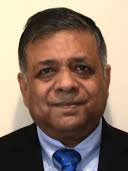 Amitabha (Amitava) Ghosh[F] (amitava.ghosh@nokia.com) is a Nokia Fellow and Head, Radio Interface Group at Nokia Bell Labs. He joined Motorola in 1990 after receiving his Ph.D in Electrical Engineering from Southern Methodist University, Dallas. Since joining Motorola he worked on multiple wireless technologies starting from IS-95, cdma-2000, 1xEV-DV/1XTREME, 1xEV-DO, UMTS, HSPA, 802.16e/WiMAX and 3GPP LTE. He has 60 issued patents, has written multiple book chapters and has authored numerous external and internal technical papers. He is currently working on 3GPP LTE-Advanced and 5G technologies. His research interests are in the area of digital communications, signal processing and wireless communications. He is the recipient of 2016 IEEE Stephen O. Rice and 2017 Neal Shephard prize, member of IEEE Access editorial board and co-author of the book titled "Essentials of LTE and LTE-A". |
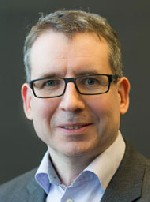 Antti Toskala is responsible for Nokia’s 5G radio standardization. He has his MSc in Electrical Engineering from Tampere University of Technology. He has been the author and editor on the many books in the field, including recent books on HSPA+, VoLTE, LTE-Advanced and LTE Small Cell Optimization. He participates to 3GPP RAN standardization, and has also chaired 3GPP TSG RAN WG1 during HSPA development until 2003. As part of the 2010 LTE World Summit LTE Awards, he received the “Award for Individual Contribution for LTE Development” recognizing his contribution to both LTE standardization and LTE knowledge spreading in the industry. In 2015 he was nominated as Nokia Fellow. Currently he is Bell Labs Fellow, leading radio 5G and C-IoT standardization, as well as spectrum regulation. |
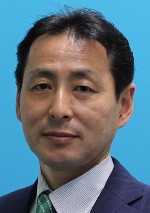 Takehiro Nakamura joined NTT Laboratories in 1990. He is now SVP and General Manager of the 5G Laboratories in NTT DOCOMO, Inc. Mr. Nakamura has been engaged in the standardization activities for the W-CDMA, HSPA, LTE/LTE-Advanced and 5G at ARIB in Japan since 1997. He has been the Acting Chairman of Strategy & Planning Committee of 5G Mobile Communications Promotion Forum(5GMF) in Japan since October 2014. Mr. Nakamura has also been contributing to standardization activities in 3GPP since1999, including as a contributor to 3GPP TSG-RAN as chairman from April 2009 to March 2013. He is also very active in standardization of C-V2X/Connected Car in ARIB and ITS Info-communications Forum in Japan. He is now a leader of Cellular System Application Task Group of ITS Info-communications Forum. |
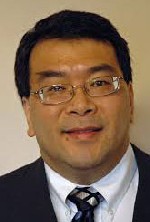 Anthony Soong (S’88-M’91-SM’02-F’14) received the Ph.D. degree in electrical and computer engineering from the University of Alberta. He is currently the Chief Scientist for Wireless Research and Standards at Huawei Technologies Co. Ltd, in the US. He currently serves on the Engineering College Industrial Advisory Board of The University of North Texas. He served as Secretary and the founding board member of OPNFV (2014-2016), the chair for 3GPP2 TSG-C NTAH (the next generation radio access network technology development group) from 2007-2009 and vice chair for 3GPP2 TSG-C WG3 (the physical layer development group for CDMA 2000) from 2006-2011. Prior to joining Huawei, he was with the systems group for Ericsson Inc and Qualcomm Inc. His research group is actively engaged in the research, development and standardization of the next generation cellular system. His research interests are in statistical signal processing, robust statistics, wireless communications, spread spectrum techniques, multicarrier signaling, multiple antenna techniques, network virtualization, SDN and physiological signal processing. Dr. Soong is a Fellow of the IEEE. He has published more than 100 scientific papers and has more than 100 patents granted or pending. He received the 2017 IEEE Vehicular Technology Society James R. Evans Avant Garde Award, the 2013 IEEE Signal Processing Society Best Paper Award and the 2005 award of merit for his contribution to 3GPP2 and cdma2000 development. He is the Industrial Chair for the 2019 Fall IEEE Vehicular Technology Conference (VTC), Industrial Co-Chair for 2019 Spring IEEE VTC, has served on the advisory board of 2014 IEEE Communication Theory Workshop, Steering Committee of IEEE Int. Workshop on HetSNet and on the technical program committee, as well as, chaired at numerous major conferences in the area of communications engineering. He has acted as guest editor for the IEEE Communications Magazine and IEEE Journal on Selected Areas in Communications. |
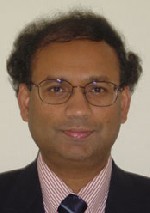 Rath Vannithamby received his BS, MS, and PhD degrees in EE from the University of Toronto, Canada. He is a senior research scientist in Intel Labs, USA responsible for 5G research. He is a recipient of Top Inventor award at Intel in 2015. Previously, he was a researcher at Ericsson, USA. He is a Senior Member of IEEE. He is an IEEE Communications Society Distinguished Lecturer for 2014-2017. He has published over 50 journal/conference papers and has over 200 patents granted/pending. He is an editor of a couple of books: (i) "Towards 5G: Applications, Requirements and Candidate Technologies" by Wiley and (ii) "Design and Deployment of Small Cell Networks" by Cambridge Press. He has also authored chapters of 3 books on 4G. He has given keynote speeches in IEEE GC’10 BWA workshop, IEEE APWiMob’14, IEEE IAICT’14, IEEE ISTT’14, IEEE ICIIS’15, ANDICOM'16 and WIoT'17. Dr. Vannithamby has been an associate editor for Journal of IEEE Communications Surveys and Tutorials since 2012, and he was an editor for IEEE Internet of Things Journal in the past. He was the lead-chair for workshops on (i) "5G Technologies" and (ii) "M2M Communications for IoT" in IEEE ICC 2014; and co-chair for "5G HetNets" workshop in GC'16, and "Main Trends in 5G Networks" workshop in ICC'17. He has given tutorials and hosted panels on 3G/4G/5G topics in numerous venues in IEEE conferences. He was a Guest Editor for EURASIP JWCN SI on RRM for 3G+ Systems. He was a TPC symposium co-chair for PIMRC'11. He is a member and the Standards Liaison for IEEE ComSoc Signal Processing and Communications Electronics Technical Committee (SPCE-TC). He has also served on TPC for IEEE ICC, GC, VTC, WCNC, and PIMRC. His research interests are in the area of 5G RAN, 5G IoT, ultra-dense networking, Autonomous Driving, and ICN. |
14:00–15:30 (Kona Moku Salon B)
Challenges and Technologies for Building the 5G Network Edge
| Moderator: | Alan Gatherer, Futurewei Technologies |
| Panelists: | Gregory Wright, Nokia Bell Labs |
| Gajinder Panesar, UltraSoC | |
| Marcus Wong, Futurewei Technologies | |
| K. Kiran Mukkavilli, Qualcomm Research |
Summary—We will outline the key technologies in hardware, software and systems that the industry is developing to support the promised performance of 5G networks. This session will not focus on the algorithm challenges, though there are many, but will instead focus on the difficulties in realizing these algorithms in hardware at the challenging cost, power and flexibility goals that the 5G network demands.
|
|
Biographies | |
 Alan Gatherer is a Senior Technical Vice President at Futurewei Technologies, USA and Fellow of the IEEE. He is responsible for R&D efforts in the US to develop next generation baseband chips and software for 4G and 5G basestation modems. His group is presently developing new technologies for baseband SoC in the areas of multimode modems as a Service, interconnect and memory fabric, CPU/DSP clusters and virtualization, focusing on 5G deployment. Alan joined Futurewei in January 2010. Prior to that he was a TI Fellow and CTO at Texas Instruments where he led the development of high performance, multicore DSP at TI and worked on various telecommunication standards. Alan has authored over 50 journal and conference papers. In addition, he holds over 70 awarded patents and is author of the book “The Application of Programmable DSPs in Mobile Communications.” Alan holds a bachelor of engineering in microprocessor engineering from Strathclyde University in Scotland. He also attended Stanford University in California where he received a master’s in electrical engineering in 1989 and his doctorate in electrical engineering in 1993. |
 Gregory Wright received his bachelor's degree in physics from Harvard University, his M.A. in mathematics from Cambridge University and his Ph.D. in physics from Princeton University. He did his postdoctoral studies at Bell Labs in millimeter wave astronomy, developing receiver systems operating at 230, 492 and 810 GHz. He was a researcher at Bell Labs from 1994 until 2001, after which he co-founded startups in network performance measurement and RFID systems. He joined Alcatel-Lucent Bell Labs (now Nokia Bell Labs) in 2010 as a member of wireless communication research, where he has worked on new approaches for antenna arrays, reconfigurable signal processing and wide dynamic range radios. |
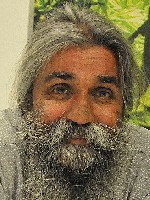 Gajinder Panesar is one of Europe’s leading SoC architects. Gajinder’s experience includes senior architecture definition and design roles within both blue-chip and start-up environments. He holds more than 20 patents and is the author of more than 20 published works. Prior to joining UltraSoC, he served at NVIDIA (NASDAQ:NVDA). As Chief Architect at Picochip he created the architecture of the company’s market-defining small-cell SoCs, and continued in this capacity after the company’s acquisition by Mindspeed Inc (NASDAQ:MSPD). His previous experience includes roles at STMicroelectronics, INMOS, and Acorn Computers. He is a former Research Fellow at the UK’s Southampton University, and a former Visiting Fellow at the University of Amsterdam. |
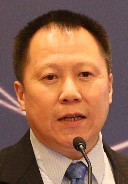 Marcus Wong has over 20 years of experience in the wireless network security field with AT&T Bell Laboratories, AT&T Laboratories, Lucent Technologies, and Samsung’s Advanced Institute of Technology. He is CISSP certified.<>/p> Marcus has concentrated his research and work in many aspects of security in wireless communication systems. Marcus joined Futurewei Technologies (a subsidiary of Huawei Technologies) in 2007 and continued his focus on research and standardization. Marcus has held elected official positions in both WWRF and 3GPP. He also served as guest editor in the IEEE Vehicular Technology magazine. As an active contributor, author, and publisher, he has shared his security research on a variety of whitepapers, book chapters, and speaking engagements. |
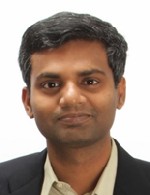 Dr. K. Kiran Mukkavilli is a Principal Engineer/Manager in Qualcomm Research. He joined Qualcomm in 2003, holds 102 granted U.S.patents, and has been involved in system design, standardization, implementation and commercialization of a variety of projects at Qualcomm. He was one of the principal architects of MediaFLO, a mobile broadcast solution from Qualcomm, and was heavily involved in the product development, standardization and commercialization efforts. He was also the systems design lead responsible for commercialization of the UMTS modem in Qualcomm Snapdragon 800/801 products. In his current role, he is responsible for R&D efforts for PHY/MAC system design, standardization and prototyping for Sub 6GHz aspects of 5G NR. He successfully led Qualcomm's effort to set up industry's first end to end Rel 15 spec compliant 5G NR call with the leading infra vendors using proto UE implementation. Dr. Mukkavilli received his Ph.D. in electrical engineering from Rice University in 2003 and also holds M.S. from Rice University and Bachelor of Technology from Indian Institute of Technology, Madras. |
16:00–17:30 (Kona Moku Salon B)
Conquering New Application Frontiers with 5G
| Moderator: | K. Kiran Mukkavilli, Qualcomm Research |
| Panelists: | Antti Toskala, Nokia Bell Labs |
| Jin Yang, Verizon Communications | |
| Siva Subramani, Futurewei Technologies | |
| Wanshi Chen, Qualcomm |
Summary—This session will focus on new consumer and industrial use cases uniquely enabled by 5G with requirements based on throughput, latency and reliability. Example applications include XR (AR/VR, cloud gaming, edge compute), Industrial IOT, enhanced V2X among others. The session will comprise of invited talks followed by a panel discussion. |
|
Biographies | |
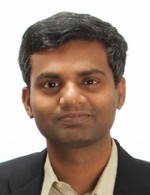 Dr. K. Kiran Mukkavilli is a Principal Engineer/Manager in Qualcomm Research. He joined Qualcomm in 2003, holds 102 granted U.S.patents, and has been involved in system design, standardization, implementation and commercialization of a variety of projects at Qualcomm. He was one of the principal architects of MediaFLO, a mobile broadcast solution from Qualcomm, and was heavily involved in the product development, standardization and commercialization efforts. He was also the systems design lead responsible for commercialization of the UMTS modem in Qualcomm Snapdragon 800/801 products. In his current role, he is responsible for R&D efforts for PHY/MAC system design, standardization and prototyping for Sub 6GHz aspects of 5G NR. He successfully led Qualcomm's effort to set up industry's first end to end Rel 15 spec compliant 5G NR call with the leading infra vendors using proto UE implementation. Dr. Mukkavilli received his Ph.D. in electrical engineering from Rice University in 2003 and also holds M.S. from Rice University and Bachelor of Technology from Indian Institute of Technology, Madras. |
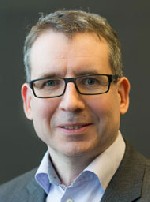 Antti Toskala is responsible for Nokia’s 5G radio standardization. He has his MSc in Electrical Engineering from Tampere University of Technology. He has been the author and editor on the many books in the field, including recent books on HSPA+, VoLTE, LTE-Advanced and LTE Small Cell Optimization. He participates to 3GPP RAN standardization, and has also chaired 3GPP TSG RAN WG1 during HSPA development until 2003. As part of the 2010 LTE World Summit LTE Awards, he received the “Award for Individual Contribution for LTE Development” recognizing his contribution to both LTE standardization and LTE knowledge spreading in the industry. In 2015 he was nominated as Nokia Fellow. Currently he is Bell Labs Fellow, leading radio 5G and C-IoT standardization, as well as spectrum regulation. |
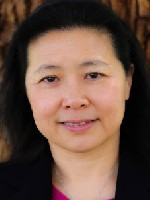 Jin Yang is a Fellow at Verizon Communications Inc., responsible for wireless technology and strategy. She is leading next generation wireless network architecture and technologies, including 5G NR, Evolved LTE, Internet of Things (IoT), Multi-access Edge Computing, network virtualization, and Self-Organizing Network. She has played a key role in the development and commercialization of 5G NR in 2019, LTE networks in 2010 and various CDMA networks since 1995 at Verizon, Vodafone and AirTouch Communications. |
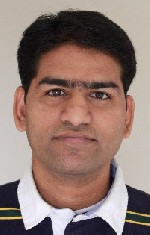 Siva Subramani is a Senior Standards Expert with Futurewei Technologies He is actively involved in 3GPP RAN standardization, particularly on 5G physical layer developments, LTE / LTE-A enhancements and features. He was with Vodafone Group as a Standards Strategy Manager with responsibility for Radio Access Network (RAN) standardization in 3GPP and developing features related to vertical industry. |
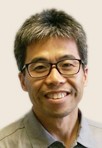 Wanshi Chen is Principal Engineer and Manager at Qualcomm Technologies, and serves as the Chair of the 3GPP RAN 1 Working Group. He has over 15 years of experience in telecommunications with leading telecom companies including operators, infrastructure vendors, and user equipment vendors. From 1996 to 1997 he worked at China Mobile focusing on wireless network installation, maintenance, field test and debugging, and performance characterization and optimization. From 2000 to 2006 he worked for Ericsson Wireless Communications, San Diego, and was responsible for 3GPP2 related system design, integration and performance optimization for commercial products, and 3GPP2 standardization. In May 2006 Wanshi Chen joined Qualcomm, San Diego, where, as one of the key team members, he has been contributing to the design, development and specification of LTE standardization through active participation in 3GPP RAN1. Wanshi Chen received his Ph.D. degree in electrical engineering from the University of Southern California, Los Angeles, CA, USA, and has been a 3GPP TSG RAN1 Vice Chairman since August 2013. |

